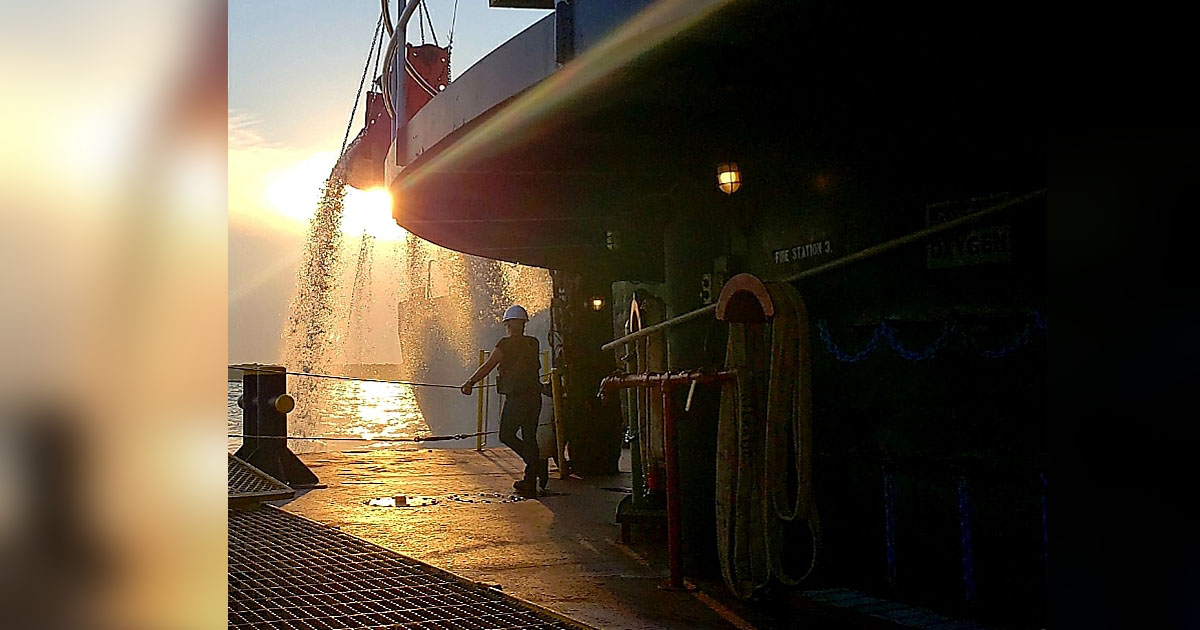The work of a Protected Species Observer (PSO) is relatively unknown and often misunderstood, even within the marine industry. The romanticized image of an individual standing on the bow of a ship, the sun gently caressing their face while a salty breeze gently tussles their hair as they search the seas for whales reflects the marginal awareness of what PSOs do.
The reality is that a PSOs work is physically and psychologically demanding. A PSO must be able to withstand the constrained living conditions on the vessel. Working seven days a week for weeks at a time, lodging with other crew personnel in small confined spaces, and limited communications with the outside world can take a toll on someone not mentally prepared for the rigors of sea life.
Days can be hot and humid with the sun relentlessly beating down from a cloudless sky or it can rain interminably for hours. If there is lightning in the area, the PSO finds a haven like the bridge of the boat to continue their watch. Often a PSO is wearing an insulated coverall or a float coat when days are bitterly cold.
The observer must understand the mitigation requirements for the specific project he/she is assigned. Most permits are similar in scope and the differences are in the details — geographical location of the project, type and number of animal species, the specific industry related to the project, and the laws/regulations of the affected state or country. Understanding the requirements in the permit is key to making the right judgment call when sighting a species of interest. The PSO must walk a fine line between the requirements of the federal/agency permit and the desires of the client to complete a project on time with minimal additional expense. The PSO must always act professionally and be prepared to validate to the client the mitigation requirements stated in the permit. PSOs are onboard to inform and guide a client, not to enforce regulations.
After a long, at times tedious day of observation and taking field notes, the PSO distills that experience into a daily report. The data isn't just watching time frames, sightings, and operational activity, but includes information obtained from the ship’s computers, the navigational system, and the operations logs documented by the ship’s personnel. Empirical data includes specifications of the equipment used during the project, GPS locations of the vessel, and weather-related information. Details of the sightings include the species, description, and behavior of the animal and the detection method used to spot the animals. If there has been an incident or “take” of an animal, another report must be generated to describe the what, where, how, when, and why the incident occurred.
A PSO prepares by carefully reading through the permit and taking the time to understand the stated requirements. The PSO is not an enforcer of regulations but an impartial observer documenting field data and monitoring the area surrounding the client’s operations. “When we hire PSOs, we require that they possess experience and certifications commensurate with the project for which they are hired. We provide PSOs with the original permits and mitigation requirements before the start of the project,” said Brittiny Bennett, Protected Species Program Manager at MVI. “We understand the challenges our clients are facing and we provide top tier professional PSOs to help them successfully complete their projects.”
In spite of the challenges and hardships, being a PSO is extremely rewarding. As a PSO recently reflected after finishing a project on Jupiter Island, Florida, “After working one-hundred days straight on a hopper dredge during a beach nourishment project, I looked back at an expanded area of sand, and watched a turtle in the distance ambling her way up a dune to lay her eggs. My eyes watered when I realized that I had played a part in creating a haven for the new mother.”


